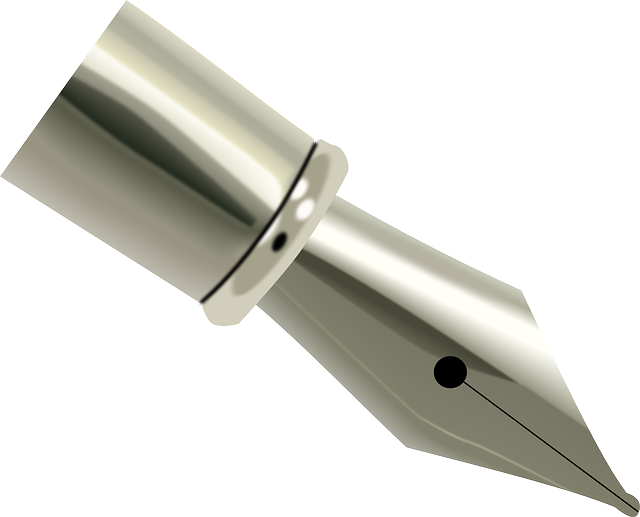This text compares Botox and dermal fillers as non-invasive treatments for fine lines on the forehead. Botox, derived from bacteria, paralyzes muscles to prevent wrinkle formation, offering subtle results. Dermal fillers immediately add volume to reduce lines dramatically. Both have unique mechanisms and effects: Botox relaxes muscles to smooth dynamic wrinkles, while dermal fillers fill in static ones. Cost considerations, side effects, and personal preferences guide the choice between these popular treatments. Consulting a dermatologist is crucial for determining the best option based on individual needs and goals.
“Uncover the secrets to a youthful complexion with our comprehensive guide on treating fine lines on the forehead. Explore effective non-invasive solutions, including the role of Botox and its impact on reducing forehead wrinkles. Discover an alternative approach with dermal fillers, then delve into a detailed comparison between these popular treatments—Botox vs. dermal fillers—considering pros, cons, and cost. Additionally, we shed light on safety concerns and offer personalized treatment plans for optimal results.”
Understanding Fine Lines on the Forehead: Causes and Non-Invasive Solutions

Fine lines on the forehead are a common concern for many, often becoming more noticeable as we age. These lines, known as glabellar lines or frown lines, are caused by repeated muscle contractions, especially during frowning or making facial expressions. Various factors contribute to their formation, including genetics, skin elasticity, sun exposure, and muscle activity.
While there are numerous non-invasive solutions available in the market, Botox and dermal fillers stand out as popular choices for their effectiveness. Botox, a protein derived from bacteria, temporarily paralyzes muscles, preventing contractions that cause wrinkles. On the other hand, dermal fillers involve injecting substances like hyaluronic acid into the skin to add volume and reduce the appearance of fine lines. In terms of results and longevity, Botox typically offers a more subtle, natural-looking improvement, while dermal fillers provide a more immediate, dramatic effect. When considering non-invasive treatments, it’s essential to consult a dermatologist or skincare expert who can advise on the best option based on individual needs and preferences.
The Role of Botox in Treating Forehead Wrinkles: Mechanism and Effectiveness

Botox has emerged as a popular and effective treatment for fine lines and wrinkles on the forehead, offering a non-surgical alternative to dermal fillers. The mechanism behind Botox’s success lies in its ability to temporarily paralyze muscles responsible for facial expressions, thus reducing dynamic wrinkle formation. When injected into specific areas of the forehead, Botox relaxes the brow muscles, smoothing out deep frown lines and preventing new wrinkles from forming.
Unlike dermal fillers that add volume and plumper appearance to the skin, Botox focuses on preventing muscle contraction, which is a key contributor to dynamic wrinkle formation. This makes it particularly effective for fine lines and expression lines that become more pronounced with certain facial movements. The results of Botox treatment are generally noticeable within days, providing a subtle yet significant improvement in forehead aesthetics without the dramatic changes associated with fillers.
Dermal Fillers: An Alternative Approach to Fine Lines on the Forehead

When considering treatments for fine lines on the forehead, it’s essential to explore alternatives beyond Botox. One such option is dermal fillers, which offer a different approach to achieving smoother skin. Unlike Botox, which works by relaxing muscles to prevent contraction and subsequent wrinkling, dermal fillers physically fill in the areas of deep wrinkles or hollows. These fillers are typically made from hyaluronic acid, a natural substance found in our bodies, making them a popular choice for those seeking a more subtle and natural-looking enhancement.
The appeal of Botox vs Dermal Fillers lies in their distinct mechanisms and effects. Botox is ideal for preventing dynamic lines caused by facial expressions, while dermal fillers are better suited for static wrinkles and can provide immediate results. Both options have their merits, and the choice ultimately depends on individual preferences, skin type, and the specific areas needing treatment.
Comparing Botox and Dermal Fillers: Pros, Cons, and Cost Considerations

When considering treatments for fine lines on the forehead, understanding the differences between Botox and dermal fillers is essential. Both are popular choices in aesthetic medicine, but they offer distinct approaches to addressing wrinkles.
Botox is a neurotoxin that temporarily paralyzes muscles, reducing the appearance of dynamic wrinkles caused by facial movements. It’s known for its ability to smooth out expression lines and provide a more relaxed, youthful look. On the other hand, dermal fillers are injectable substances that add volume to the skin, plumping up deep wrinkles and enhancing facial contours. While Botox focuses on preventing muscle contractions, fillers directly enhance the skin’s texture and appearance. Cost-wise, Botox treatments tend to be more affordable for specific areas like the forehead, whereas dermal fillers may offer longer-lasting results but come at a higher initial cost. The choice between the two depends on individual preferences, budget, and desired outcomes.
Safety and Side Effects: What You Need to Know Before Treatment

Before considering Botox for fine lines on the forehead, it’s crucial to understand the safety profile and potential side effects. Unlike dermal fillers, which are injected deeper into the skin to enhance volume, Botox is administered superficially to relax muscles responsible for frowning and expression lines. While generally safe when performed by a qualified professional, temporary redness, swelling, or discomfort at the injection site is common. In rare cases, patients may experience more serious side effects like headaches, nausea, or vision problems. When choosing between Botox and dermal fillers, consulting with a dermatologist or aesthetics specialist is essential to determine which treatment aligns best with your individual needs and goals. They can provide insights into expected outcomes, downtime, and potential risks based on your specific case.
Choosing the Right Treatment Plan: Individualized Approaches for Optimal Results

When considering Botox or dermal fillers for fine lines on the forehead, it’s crucial to understand that personalized treatment plans are key to achieving optimal results. Both Botox and dermal fillers have their unique advantages and applications. Botox, a neurotoxin, is particularly effective in relaxing facial muscles responsible for dynamic wrinkling, often targeting frown lines and forehead creases. On the other hand, dermal fillers enhance skin volume by injecting substances like hyaluronic acid into specific areas, smoothing out fine lines and adding definition to the brow bone.
The right choice depends on individual needs and goals. A qualified dermatologist will assess your skin and muscle structure, discussing factors such as severity of wrinkling, desired outcome, and lifestyle considerations. They might recommend a combination treatment or suggest waiting before proceeding with either Botox or dermal fillers, ensuring you receive the most effective, safe, and tailored approach for addressing fine lines on your forehead.
